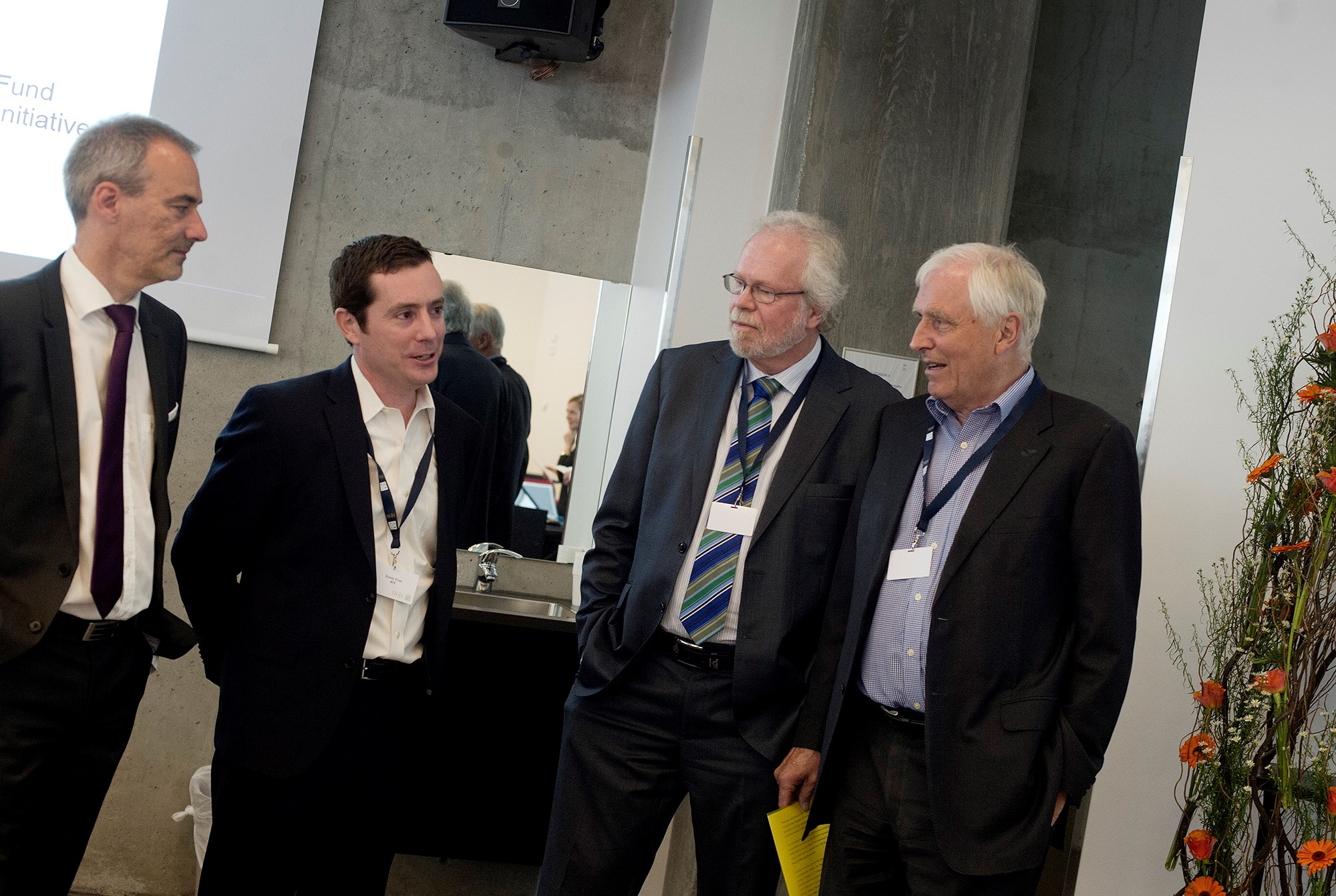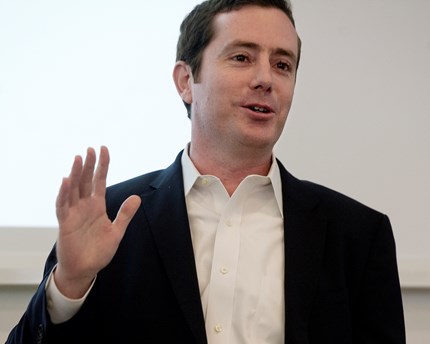
The Wild Hunt for Nanoseconds
High-frequency trading can be a shortcut to good trades on the stock exchange.
High-frequency trading has existed for over 15 years, but when Michael Lewis published Flash Boys: A Wall Street Revolt: Flash Boys in 2014, reactions were strong, and many of them were negative. A number of the same people who had criticized the high-frequency trading (HFT) companies after the "Flash Crash" on the American stock exchange in 2010 were back.
In June NHH hosted Jan Mossin Memorial Symposium «Do financial markets double-deal investors?». Academics and practitioners discussed HFT, and one of the characters from Lewis´ non-fiction book Flash Boys, Ronan Ryan, was a key note speaker. He told inside stories of his meetings with Lewis and how HFT-companies´ hunt for nanoseconds went crazy.
"In 2010 the US stock exchange fell by 10 per cent in a matter of minutes," says Professor Thore Johnsen.
Many people, also the US authorities, believed that the HFT companies would have to take a large share of the responsibility for the crash. The battle to cut milliseconds had completely taken off.
Clever high-frequency traders
"High-frequency traders are competent people, and they try to make money at the expense of others," says Terje Lensberg. There is a saying that "Trading is the activity by which people who are smart take money from people who are not," states Professor Terje Lensberg.

HFT is different from regular algorithm trading. With supercomputers and fast fibre-optic cables, trades are made at lightning speed in large numbers and in small volumes. The shorter the physical distance between the traders and the marketplace, the faster the trades. They often hold shares for less than a second.
"In order to trade, they need information from the market, they must process it quickly, and purchase and sale orders must be made very quickly. All of this must take place before others manage to do the same," explains Lensberg.
"Is this speculative?"
"Most of what happens on the market is speculative, but no, it's not a trick" says Lensberg.
"Call it speculation," adds Johnsen, "but it is speculation of value to society. Buying something that looks cheap and selling something that looks expensive, so that the prices are corrected, is good for everyone."
They only think they know something
"Two groups of traders create value on the stock exchange. Amateurs trade because they think they know, and they pay. Speculators make money. Amateurs finance speculators. They do the innovation work and make sure that the prices are right. If the amateurs weren't there, it would be more difficult for the market to find the right prices."
"Who are the amateurs?"
"They are people who think that they can beat the stock exchange without knowing what they are doing," says Lensberg.
He believes that HFT today has reached a point where it is fairly stable in terms of volume.
"If this is so good, why aren't there more high-frequency traders?"

"Let's look at the positives first: HFT companies keep market prices stable. When they do their job, the prices are right at all times. If the prices are wrong, there is money to make, and HFT companies react," says Lensberg.
Johnsen agrees with his colleague, and points out that HFT provides liquidity in the market, and that it plays an important economic and societal role.
A couple of problems
"However," says Lensberg, "the fact that they are so fast is a problem. They can enter a trade much more quickly, and you get frontrunners."
"This is a challenge for large institutional investors like the Government Pension Fund Global," he believes. When the Government Pension Fund Global trades during the course of one day, it is not very difficult for a high-frequency trader to see movements in this market. Statistically this indicates that a large seller is active. They can then hoover up the shares that the Government Pension Fund Global wants to buy, which means that the Fund has to pay more.
Frontrunners are one of the problems with HFT, because they cut in front of others in the queue. Other buyers must pay more, and sellers receive a lower price.
"Are there major societal consequences?"
"This means that those who need to trade, for example because they are rebalancing a portfolio, must pay more to complete the trades. The Government Pension Fund Global, for example, earns slightly less, and the state has less to spend, says Lensberg. Even though small sums are moved in each trade, they will add up to large amounts. This represents a large amount of money for the Government Pension Fund Global.
A stock exchange for investors
An answer to this is IEX, a stock exchange designed for investors, not for traders. It was approved a fully fledged stock exchange in June.
"The Government Pension Fund Global can trade here without being front run by high-frequency traders. This is its purpose. A slow trader, like the Fund, makes it possible for HFT companies to get to the front of the queue and buy and sell to the Fund at a higher price," says Lensberg.
"Great bites can be taken out of the added value that these managers create if they encounter too many of these clever front runners in the market," believes Professor Johnsen.
Good point
Many HFT companies have invested great amounts in order to acquire the fastest cables.
"This brings us to a good point," says Johnsen, and refers to the descriptions of a specific super cable in Flash Boys.
"Because the length of this cable between those who place the order and those who receive it, i.e. the stock exchange, is important, what happened is amazing. Michael Lewis describes how far high-frequency traders are willing to go to beat the competition. Many of them helped finance a fibre-optic cable along the straightest possible stretch between the stock exchanges in Chicago and New York, based in New Jersey," explains Johnsen.
Well-spent money?
This is a straight stretch of 1330 miles, perhaps the straightest ditch ever dug on Earth, comments Michael Lewis:
"It needed its burrow to be straight, maybe the most insistently straight path ever dug into the earth. It needed to connect a data centre on the South Side of Chicago to a stock exchange in northern New Jersey. Above all, apparently, it had to be secret."
"You can ask whether this was money well-spent," says Lensberg.
"It does not matter whether the signal arrives a microsecond before or after. The people responsible for laying the cable sold participation in advance, saying 'If you don't join in, you'll be much slower than everyone else'."
"This is a waste of resources, no matter how you look at it," says Lensberg.
Goes crazy
Johnsen and Lensberg mention another negative aspect of high-frequency traders. They take a break when the market 'goes crazy'.
"The people who have constructed these algorithms cannot be completely sure that they work as intended. Many of them are market makers who place orders to trade with others who want to buy or sell, but when the market performs badly, they withdraw the orders. Then there is no market any longer, because it was mostly created by these high-frequency traders," says Lensberg.
"That is part of what happened with the 'flash crash' in 2010, when the US stock market moved 10 per cent over a 20-minute period. Some shares fell by up to 70 per cent," says Johnsen.
Black Monday 1987
"What you need in a crisis, like in 2008 or during the Black Monday crash of 1987, when the stock exchange fell by 20 per cent, is buyers," he says.
"High-frequency traders want to quickly cancel orders or vanish. During the 2008 crisis, the Government Pension Fund Global was a large buyer in the stock market, which was just what the market needed when everyone was panicked and wanted to sell. In 1987 the Fund would have been an important buyer and you would have received the fundamental investments you needed to create the necessary liquidity," says Johnsen.